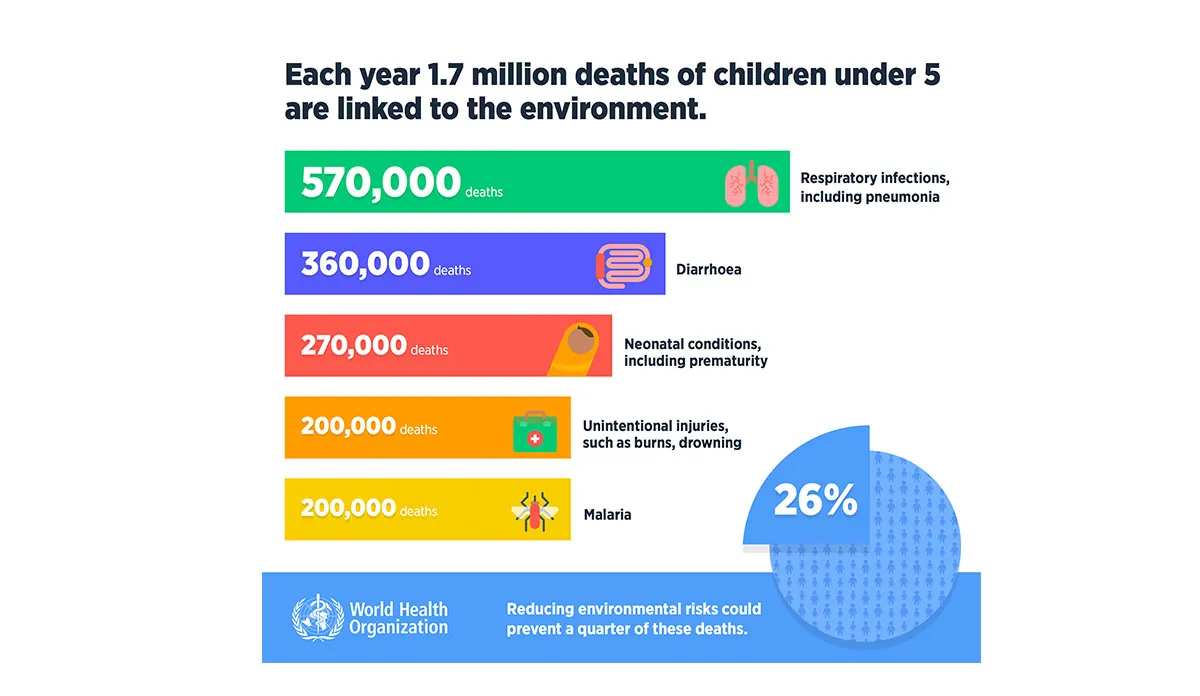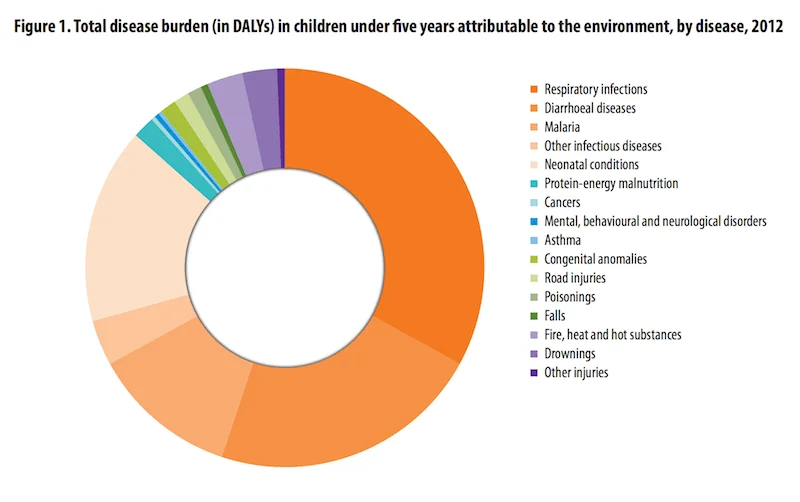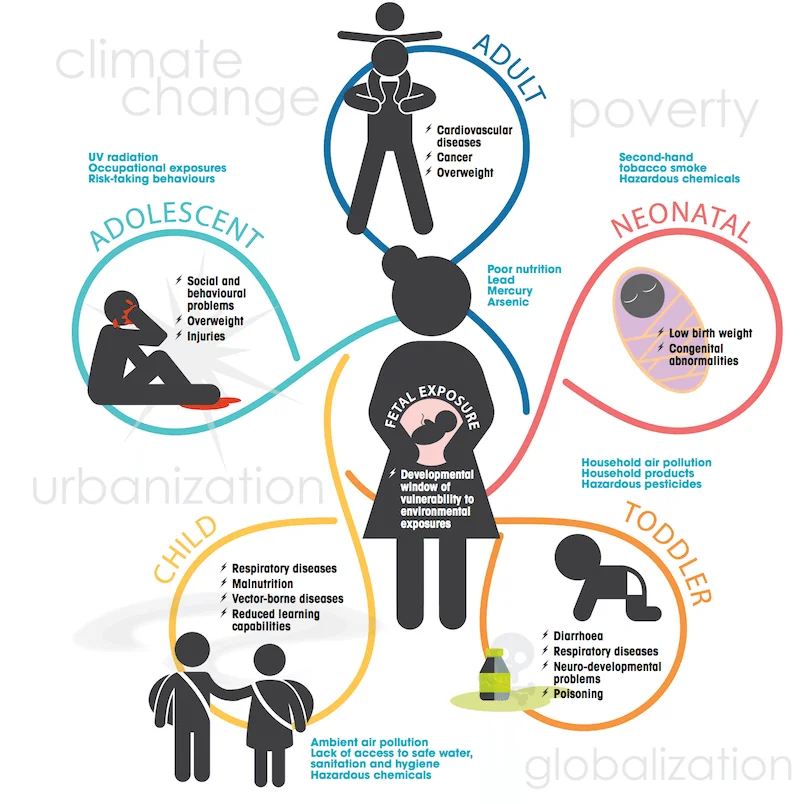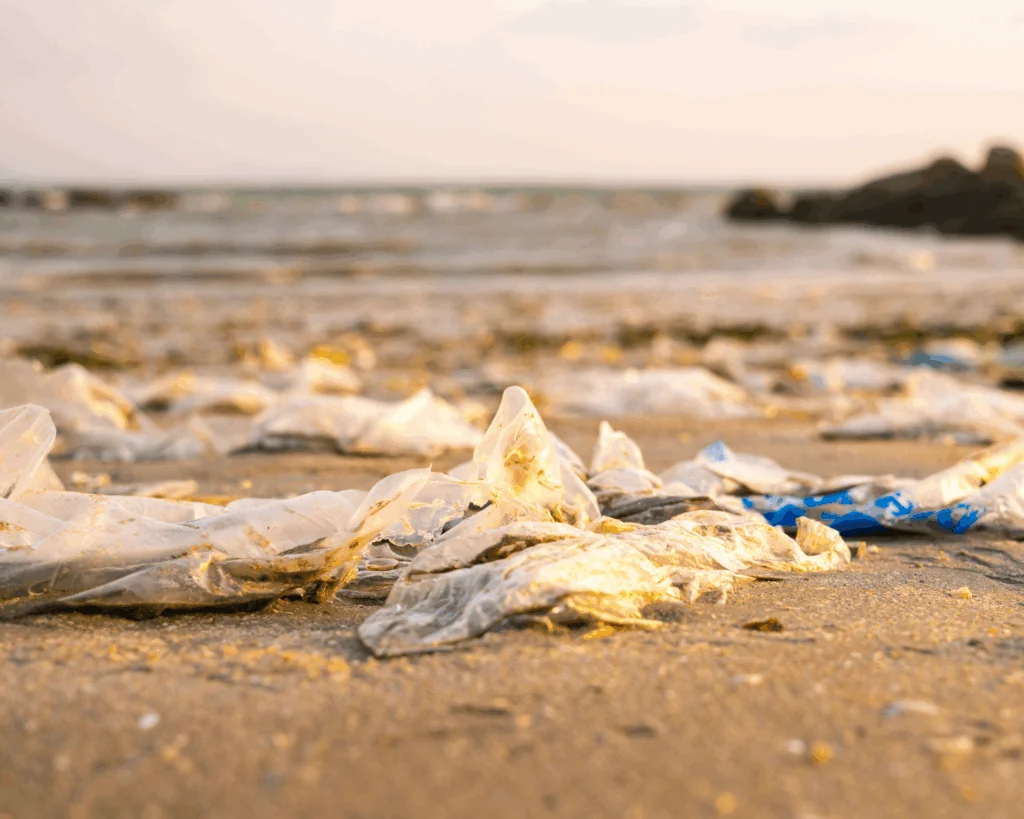Polluted Air, Dirty Water, and Child Health
Indoor and outdoor air pollution and smoke are responsible for an estimated 570,000 deaths in children under 5. While child deaths attributable to environmental hazards decreased from 37% to 26% from 2002 to 2012, continued progress is in a precarious state.

Read Time: 2 minutes
Published:
For children, even small doses of pollution can be fatal. Indoor and outdoor air pollution and smoke are responsible for an estimated 570,000 deaths in children under 5, according to a recently released WHO report on the Impact of the Environment on Children’s Health. Half of the one million child deaths from pneumonia each year are attributable to air pollution.
Nearly one in three people worldwide lack access to adequate sanitation facilities, which are defined as “those that effectively separate excreta from human contact, and ensure that excreta do not re-enter the immediate household environment.” Poor water quality and hygiene and lack of access to adequate sanitation facilities are responsible for over 360,000 child deaths from diarrhea and 270,000 deaths in the first month of a child’s life.
“Their developing organs and immune systems, and smaller bodies and airways, make them especially vulnerable to dirty air and water,” says WHO General-Director Dr. Margaret Chan.

Photo via The Impact of the Environment on Children’s Health. World Health Organization.
An accompanying chart (below) in the WHO’s “Inheriting a Sustainable World: Atlas on Children’s Health and the Environment” report shows that children are susceptible to illness and death from environmental pollution even before birth. A mother’s exposure to pollution experiences increases her child’s risks of preterm birth and stunted development. After birth, a child’s exposure to pollution may mean reduced lung function, respiratory infection, and asthma. And in the long-term, risks increase for cancer, chronic respiratory illness, and cardiovascular disease.

Photo via Inheriting a Sustainable World: Atlas on Children’s Health and the Environment. World Health Organization.
The good news is that the fraction of child deaths attributable to environmental hazards decreased from 37% to 26% from 2002 to 2012. The remaining 26% of deaths are preventable with the right interventions.
However, given the Trump administration’s efforts to dismantle environmental regulations, continued progress is in a precarious state. As Erik Solheim, executive director of the United Nations Environment Program, told the New York Times, “this is not the time for any country to change course on the very serious and very real threat of climate change.”
Databyte via Children’s Environmental Health Infographic. World Health Organization.



